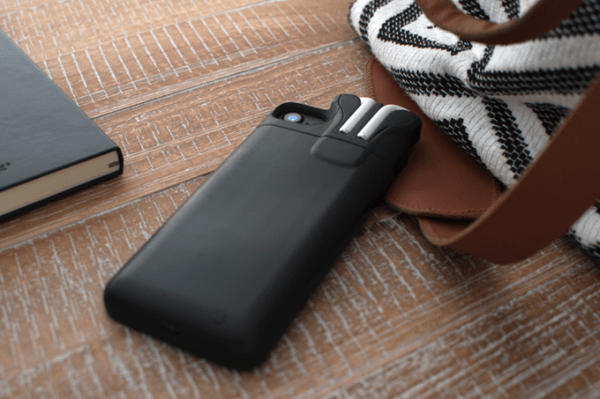PodCase’s search for $300,000 on Kickstarter has ended — not with a bang but a whimper. Earlier this week, the company posted an update to its page, explaining that it would not be continuing the campaign after having pulled in less than a tenth of its goal, with around three days left.
“As I’m sure you can see, this project was way less successful than we had intended,” the product’s creators noted. “Unfortunately it will not be funded and we will not be able to manufacture PodCase as it stands today, at least on the timeline that we were aiming for.”
The project was notable not just for its clever solution to the problem of carrying around an extra AirPods case, but also for the team involved. The project was the work of Avegant co-founder Allen Evans, Pebble lead designer Steve Johns and the bygone smartwatch startup’s founder, Eric Migicovsky. With that sort of pedigree, it was a bit of a surprise to see the project come up so short.
After all, Pebble currently commands three of the top five Kickstarter projects of all time (joined by a “cooperative nightmare horror game experience” and, naturally, a party cooler). Of course, PodCase hedged its bets a bit with an early press push, noting that the company wasn’t actually a company, per se. It was more the work of a few industry vets attempting to change the conversation around what it means to be a hardware startup.
As Migicovsky told me early last month, “There are some products that don’t need an entire company around them.” The idea behind the PodCase’s launch was to get all of the required funding in one fell swoop. In other words, the team would never seek outside investor funding and instead it would simply treat each product as its own self-contained project. Create a product, fund it, release it, repeat.
“We were trying to run this experiment where we were trying to see if we could fund this entire experiment on the back of one Kickstarter campaign,” Migicovsky told me on the phone earlier today. “I think the answer is no, at least for these products. Imagine if we had done it the other way, where people see the barrier really low and spend a lot of money on advertising and it’s not successful. Then you’re stuck holding the bag. You need to either find investors that will post up the cash to fund the same operation that you’d already promise your Kickstarter backers. I think we were a little more honest and upfront with people.”
Of course, such an undertaking also requires a lot of money upfront, which is the primary reason behind the PodCase’s lofty $300,000 all or nothing goal. Launching a Kickstarter campaign always requires a level of mental math, weighing demand against financial need. And when you’re rejecting the possibility of external funding, the latter increases dramatically. In the case of this campaign, the ultimate number missed the mark — by a lot.
It’s not that there was no demand for the product. It was certainly a clever approach, and the company pulled in 325 backers, but a lot of different pieces have to line up perfectly to make someone a potential customer for a product like this.
“We [overestimated] the number of people that were interested in solving this problem at the expense of another case on top of their phone,” Migicovsky says. “The majority of the AirPod base we were going after didn’t overlap with the group of people who were interested in putting cases on their phone, at least in the configuration that we showed off.”
To the casual observer, it also appears as though the team’s intentional lack of resources came into play here. Migicovsky waves off the notion that a proper PR team is necessary to a successful Kickstarter campaign, but when you’re looking for a minimum of hundreds of thousands, it’s certainly a big help.
The team’s relative nonchalance about the whole thing means, perhaps, that its inability to meet the goal is a little less heartbreaking — for them, at least. At the very least, it leaves fewer people in the lurch — the all or nothing approach means that backers are disappointed, but not out $70 or $80. Instead, Migicovsky is approaching the whole thing as a sort of learning experience.
“We treated it like a fishing expedition,” he says. “We tried to just see if people were interested. The other way was what we did with Pebble, where we’d already been working on it for four years, we’d already launched our first version, we already had a couple thousand users, and we knew that we’d take the feedback from the early versions and funnel it into Pebble. This was the first shot in the dark with this concept and we got the feedback we needed.”
As far as what that means for the future of this project specifically, the team isn’t ruling out the possibility of another go at the PodCase, perhaps with a focus on the iPhone X. The overlap between iPhone X and AirPod users is probably pretty large. And people are likely going to want a case to protect their $1,000 phone.
“I have no idea one way or another,” says Migicovsky, “but it doesn’t represent a blocker for me. I spent four years launching various versions of what would become Pebble before launching it on Kickstarter. That was never a mental blocker for us.”
